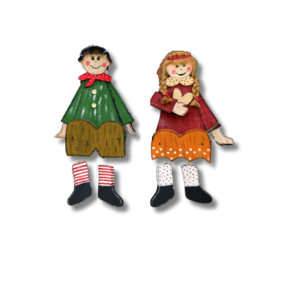Activity 10: Telling Fairy Tales: Hansel and Gretel
Overview of the activity
This activity deals with the cultural heritage of tales and telling stories. It also deals with perspectives and how they can shift and shed another light on events. In this activity, the fairy tale of Hansel and Gretel will be used, but other fairy tales, folktales and fables could also be used.
Objectives
- Introduce the richness of the heritage of tales to the participants
- Make the participants aware of the different perspectives in a story
- Encourage creative thinking and imagination
- Encourage critical thinking and create critical awareness with respect to every story
| Duration (in minutes) | Min/max number of participants | Room/space requirements |
| Between 35 and 60 minutes | There is no minimum or maximum for this activity | As the activity is preferably organized in a circle, it would be good to have a room that is large enough to make a circle |
| Minimum knowledge requirements of participants | Materials needed | |
| There is no minimum knowledge required of the participants, although it will help if they are more or less familiar with the fairy tale beforehand. | Printed copies of the fairy tale |
|
Instructions
- Invite the participants to read the text of the fairy tale.
- Ask them to identify with one of the minor characters and not the main characters. If necessary, you can use several tools to really establish this identification, such as creating a tree of life of the character (see the activity, ‘Tree of Life’).
- Invite someone to tell/read the fairy tale. You might consider doing it yourself, but in that case you will have a double task.
- You interrupt the story at certain moments, when a character is about to make a decision or has doubts about a decision. You turn to the participants who have chosen this specific character and you ask them questions such as: How did you come to this decision? Did you have doubts? Did you consider other perspectives? Do you regret anything in hindsight?
Complementary material
Evaluation
Start a discussion with the participants. Ask whether they now understood the perspectives of the other characters better. Perhaps even ask whether they now better understand how perspectives are constructed. Discuss whether they perceive the tale differently now.
You can also put the tale in a historical context. In the case of Hansel and Gretel, for example, it is worth noting that the Grimm brothers, who did not create this tale but only collected and adapted it, changed the mother into a stepmother to make the story less cruel. And there are other historical and lyric elements that can be highlighted and put into context, also underlining that norms have changed.
Teaching tips, stories and experiences during piloting
- This activity requires quite a bit of time, but most of the time the participants really enjoy it. If you have less time, skip the character building using the Tree of Life activity.
- You can also use different tools for character building derived from writing courses.
- Proper facilitation is key to this activity. Be very aware of your own role. And try to remain objective and show understanding for every character.

